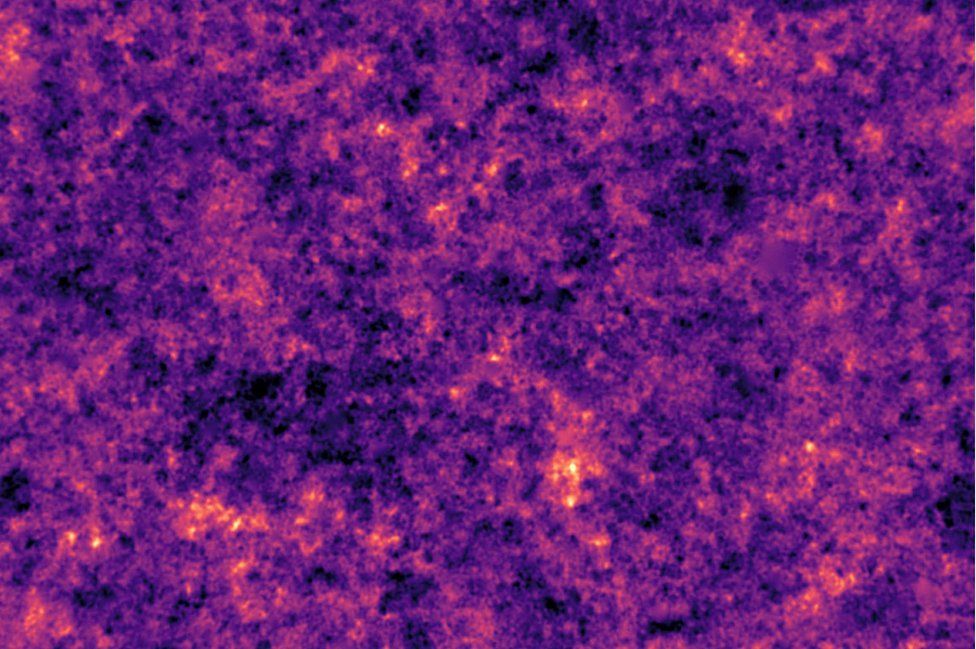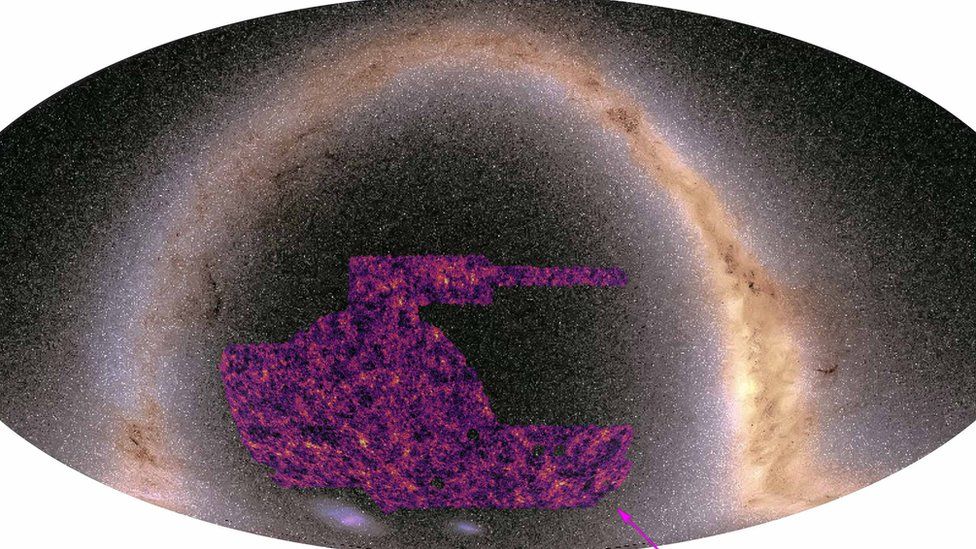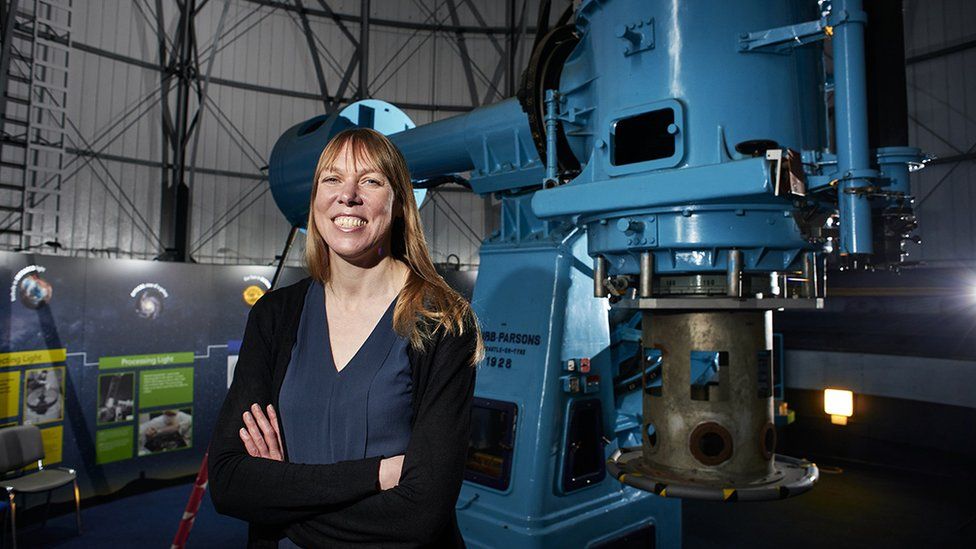|
|
Post by jandl100 on May 8, 2021 6:24:21 GMT
|
|
|
|
Post by MartinT on May 8, 2021 7:23:50 GMT
Amazing!  |
|
|
|
Post by jandl100 on May 8, 2021 8:33:15 GMT
It could be geology, rocks and stuff.
Or, perhaps, just maybe ....
Now that would be truly amazing.
|
|
|
|
Post by jandl100 on May 8, 2021 9:09:13 GMT
|
|
|
|
Post by jandl100 on May 15, 2021 6:40:49 GMT
|
|
|
|
Post by MartinT on May 15, 2021 8:34:28 GMT
|
|
|
|
Post by Slinger on May 15, 2021 13:03:15 GMT
|
|
|
|
Post by rfan8312 on May 15, 2021 13:44:15 GMT
OK so we'll have McDonald's, Burger King, Pizza Hut, Taco Bell and Dunkin' Donuts there sooner than we expected. Hopefully this time they'll all be within golf cart distance of each other though. Anyone see this semi mesmerizing view of how fast light speed looks when zoomed out? futurism.com/the-byte/video-shows-slow-light-speed |
|
|
|
Post by jandl100 on May 17, 2021 5:17:49 GMT
|
|
|
|
Post by jandl100 on May 20, 2021 20:07:04 GMT
What if.... there isn't really a 4 million solar mass black hole at the centre of our Milky Way galaxy? But instead the same mass of dark matter, a dense blob with thinning outskirts stretching far beyond the putative supermassive black hole. This could actually provide a better match for observations of the orbits and behaviour of stars closely orbiting the object at Galactic Centre. And it could also help explain the baffling mystery of how observed genuine supermassive black holes in other galaxies grew so large so fast - they didn't, but instead formed from similar dark matter clumps which collapse to form black holes when they grow to ~100x the mass of the object at the centre of our galaxy. www.sciencealert.com/wild-new-paper-proposes-the-center-of-the-milky-way-might-not-be-a-black-hole |
|
|
|
Post by MartinT on May 20, 2021 20:29:40 GMT
It's as good a theory as any other at the moment.
|
|
|
|
Post by jandl100 on May 21, 2021 10:19:31 GMT
|
|
|
|
Post by MartinT on May 21, 2021 10:41:34 GMT
It's interesting, but there are far too many unknown variables to make any accuracy in outcome realistic. Once we identify an alien civilisation, I'm sure we could improve its accuracy no end  |
|
|
|
Post by jandl100 on May 21, 2021 10:51:27 GMT
Yes, I agree.
I think the vast majority of the SETI programme is a futile waste of money and time.
Looking for techno- and bio-signatures, OK, fine.
But hoping to detect signals directed specifically at us just when (out of all the billions of years) we happen to be looking is ridiculous.
|
|
|
|
Post by Slinger on May 21, 2021 15:26:44 GMT
|
|
|
|
Post by Slinger on May 28, 2021 17:21:10 GMT
New dark matter map reveals cosmic mystery This is the most detailed map of the distribution of dark matter in the Universe. The bright areas represent its highest concentrations - which is where galaxies formAn international team of researchers has created the largest and most detailed map of the distribution of so-called dark matter in the Universe. This is the most detailed map of the distribution of dark matter in the Universe. The bright areas represent its highest concentrations - which is where galaxies formAn international team of researchers has created the largest and most detailed map of the distribution of so-called dark matter in the Universe.The results are a surprise because they show that it is slightly smoother and more spread out than the current best theories predict. The observation appears to stray from Einstein's theory of general relativity - posing a conundrum for researchers. The results have been published by the Dark Energy Survey Collaboration. Dark Matter is an invisible substance that permeates space. It accounts for 80% of the matter in the Universe. Astronomers were able to work out where it was because it distorts light from distant stars. The greater the distortion, the greater the concentration of dark matter. Dr Niall Jeffrey, of École Normale Supérieure, in Paris, who pieced the map together, said that the result posed a "real problem" for physics. " If this disparity is true then maybe Einstein was wrong," he told BBC News. "Y ou might think that this is a bad thing, that maybe physics is broken. But to a physicist, it is extremely exciting. It means that we can find out something new about the way the Universe really is." Prof Carlos Frenk, of Durham University, who was one of the scientists that built on the work of Albert Einstein and others to develop the current cosmological theory, said he had mixed emotions on hearing the news. " I spent my life working on this theory and my heart tells me I don't want to see it collapse. But my brain tells me that the measurements were correct, and we have to look at the possibility of new physics," said Prof Frenk. "Then my stomach cringes because we have no solid grounds to explore because we have no theory of physics to guide us. It makes me very nervous and fearful because we are entering a completely unknown domain and who knows what we are going to find." Using the Victor M Blanco telescope in Chile, the team behind the new work analysed 100 million galaxies. The map shows how dark matter sprawls across the Universe. The black areas are vast areas of nothingness, called voids, where the laws of physics might be different. The bright areas are where dark matter is concentrated. They are called " halos" because right in the centre is where our reality exists. In their midst are galaxies like our own Milky Way, shining brightly like tiny gems on a vast cosmic web. According to Dr Jeffrey, who is also part of a department at University College London, the map, clearly shows that galaxies are part of a larger invisible structure. " No one in the history of humanity has been able to look out into space and see where dark matter is to such an extent. Astronomers have been able to build pictures of small patches, but we have unveiled vast new swathes which show much more of its structure. For the first time, we can see the Universe in a different way."  The oval represents the entire sky, with the purple as the area that has been surveyed so far for dark matter. The bright arch is formed from the brightest stars in the night sky The oval represents the entire sky, with the purple as the area that has been surveyed so far for dark matter. The bright arch is formed from the brightest stars in the night skyBut the new dark matter map is not showing quite what astronomers expected. They have an accurate idea of the distribution of matter 350,000 years after the Big Bang, from a European Space Agency orbiting observatory called Planck. It measured the radiation still present from that moment, called the cosmic microwave background, or more poetically, the "a fterglow of creation". Drawing on the ideas of Einstein, astronomers, such as Prof Frenk, developed a model to calculate how matter should disperse over the next 13.8bn years to the present day. But the actual observations from the new map are out by a few per cent - it shows that matter is slightly too evenly spread. As a result, Prof Frenk thinks there may be big changes afoot in our understanding of the cosmos. " We may have uncovered something really fundamental about the fabric of the Universe. The current theory rests on very sketchy pillars made of sand. And what we may be seeing is the collapse of one of those pillars." But others, such as Prof Ofer Lahav, of University College London, have a more conservative view. " The big question is whether Einstein's theory is perfect. It seems to pass every test but with some deviations here and there. Maybe the astrophysics of the galaxies just needs some tweaks. In the history of cosmology, there are examples where problems went away, but also examples when the thinking shifted. It will be fascinating to see if the current 'tension' in Cosmology will lead to a new paradigm shift," he said. The DES collaboration consists of over 400 scientists from 25 institutions in seven countries. SOURCE
|
|
|
|
Post by rfan8312 on May 28, 2021 19:28:41 GMT
|
|
|
|
Post by MartinT on May 28, 2021 19:46:37 GMT
Fantastic bit of research.
|
|
|
|
Post by Slinger on May 28, 2021 21:26:41 GMT
Fantastic bit of research. It was nothing really, I found it on the BBC News website, but thanks for the compliment.    |
|
|
|
Post by Slinger on May 29, 2021 16:53:22 GMT
First woman appointed Scotland's Astronomer Royal Prof Heymans has led research trying to unlock the mysteries of dark energy and dark matter Prof Heymans has led research trying to unlock the mysteries of dark energy and dark matterAn astrophysicist from Edinburgh University is the first woman to be named Astronomer Royal for Scotland. Prof Catherine Heymans was recommended to the Queen for the role by an international panel, convened by the Royal Society of Edinburgh. Prof Heymans said she wanted to use the almost 200-year-old title to encourage people to develop passion for science. She also wants to promote Scotland internationally as a world-leading centre for science, she said.
'Spark and connection'Prof Heymans said: "I don't think anyone forgets the first time they saw the rings of Saturn through a telescope, but too many people never have the chance. " As Astronomer Royal for Scotland, I want to change that. " My hope is that once that spark and connection with the universe is made, children will carry that excitement home with them and develop a life-long passion for astronomy or, even better, science as a whole". As the 11th Astronomer Royal, Prof Heymans's main focus will be on sharing her enthusiasm for astronomy with Scots from all walks of life. One of her first targets is to install telescopes at all of Scotland's remote outdoor learning centres, which are visited by most of the country's school pupils. Prof Heymans is a world-leading expert on the physics of the so-called dark universe. Her research seeks to shed light on the mysteries of dark energy and dark matter - entities that together account for more than 95% of the universe. As well as working as a professor of astrophysics at the University of Edinburgh she is also director of the German Centre for Cosmological Lensing at Ruhr-University Bochum. Created in 1834, the position of Astronomer Royal for Scotland was originally held by the director of the Royal Observatory, Edinburgh. Since 1995 it has been awarded as an honorary title. The previous holder, John Brown, died in 2019. Prof Dame Jocelyn Bell Burnell, president of the Royal Society of Edinburgh, said: " The Astronomer Royal for Scotland has always been a distinguished and respected astronomer, and Professor Heymans is exactly that. " She will also always be distinguished as the first female to hold the position." SOURCE
|
|